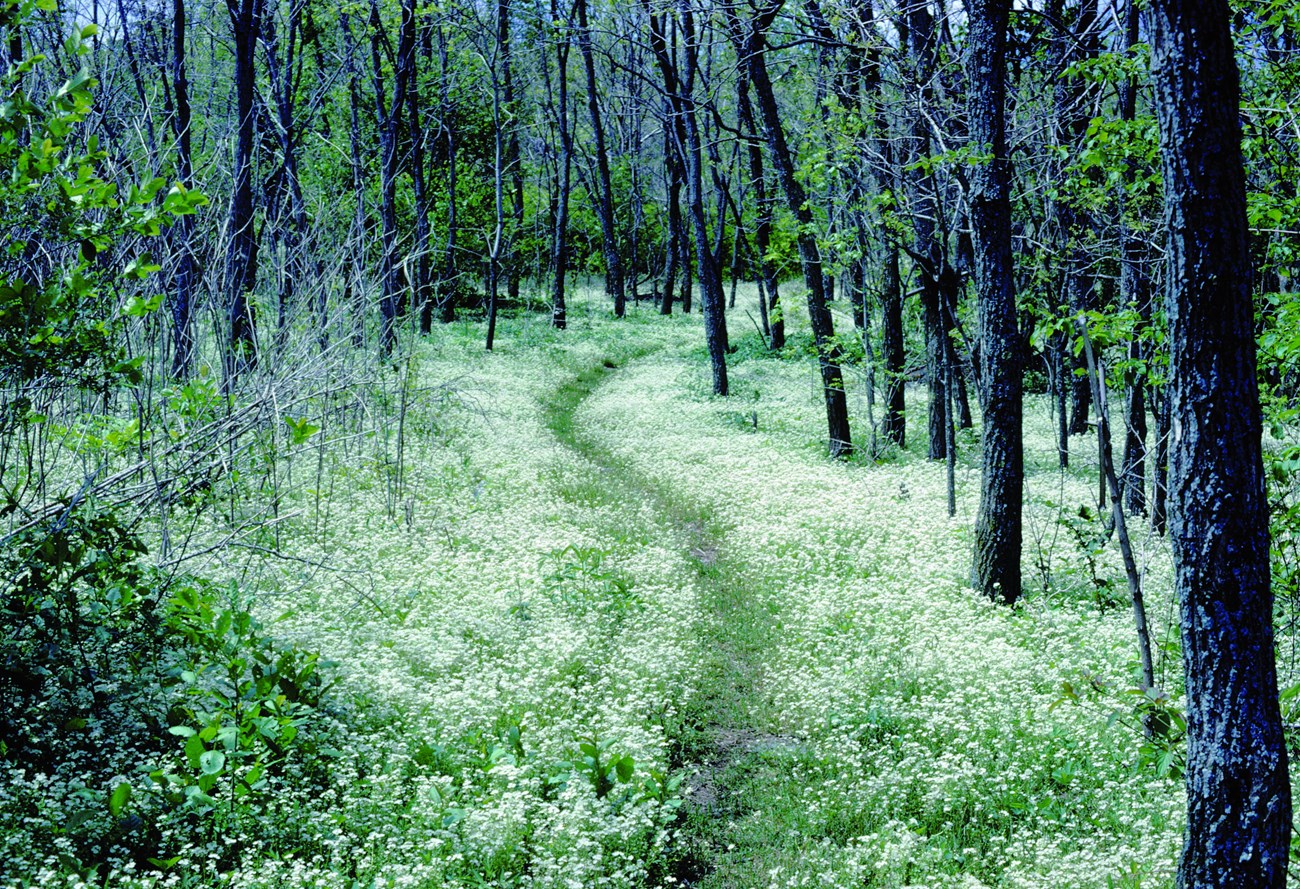Last updated: December 5, 2019
Article
Appalachian National Scenic Trail

NPS
What began in 1921 as the vision of one man, Benton MacKaye, has become the largest collaborative conservation effort in the nation. Known as the A.T., the Appalachian National Scenic Trail stretches along the spine of the Appalachian Mountains through 14 states, six national parks, eight national forests, two national wildlife refuges, and more than 80 state or municipally owned areas. Its approximately 2,180-mile length makes the A.T. one of the longest units in the National Park System.
The Appalachian Trail is cooperatively managed by the National Park Service, U.S. Forest Service, several other federal and state agencies, and the Appalachian Trail Conservancy—a non-governmental organization with more than 40,000 members.
From the trail’s inception, thousands of volunteers have constructed, maintained, supported, and protected the A.T. This work has been accomplished primarily through 31 trail clubs coordinated by the Appalachian Trail Conservancy (ATC), established in 1925. Through a cooperative management agreement, the National Park Service and the Appalachian Trail Conservancy share responsibilities for maintaining the trail and safeguarding the values that are part of the trail experience for the estimated two million annual visitors.
To ensure permanent public protection for the Appalachian Trail, the U.S. Congress made it the cornerstone of the 1968 National Trails System Act, which designated the Appalachian Trail in the East and the Pacific Crest Trail in the West as the first two national scenic trails. Amendments in 1978 and 1983 increased funding and authority for land acquisition. For more than 30 years since, the Appalachian Trail Park Office has coordinated the National Park Service’s most complex land protection effort, in collaboration with ATC, the Conservancy’s Appalachian Trail Land Trust, and other trail partners. Protection of the entire trail route is nearly complete (99 percent protected), but the work continues in order to protect sensitive landscapes and scenic viewsheds.
Beyond recreation, the A.T.’s 250,000-acre protected corridor has become a vital outdoor laboratory for studying environmental effects on natural resources. The trail’s north-south alignment represents a cross-section of the eastern United States and includes elevation ranges that encompass one of the richest assemblages of temperate zone species in the world. Scientists believe the trail’s protected corridor could be an indicator for environmental conditions that directly affect more than a third of the U.S. population.
In 2006, the NPS and its partners launched the MEGA-transect initiative, a collaborative environmental monitoring and research effort to systematically collect data on species and environmental conditions along the entire trail. The A.T.’s “MEGA” transect is on a very large landscape scale: from Maine (ME) to Georgia (GA). Building on the A.T.’s long tradition of volunteerism, trail maintainers, hikers, students, and other volunteers are part of a growing cadre of citizen scientists who are collecting and monitoring scientifically valid data for a series of specified indicator categories.
The A.T.’s MEGA-transect initiative is an example of “connected conservation” from protecting the Appalachian Trail corridor to understanding environmental impacts on the entire Appalachian region.
